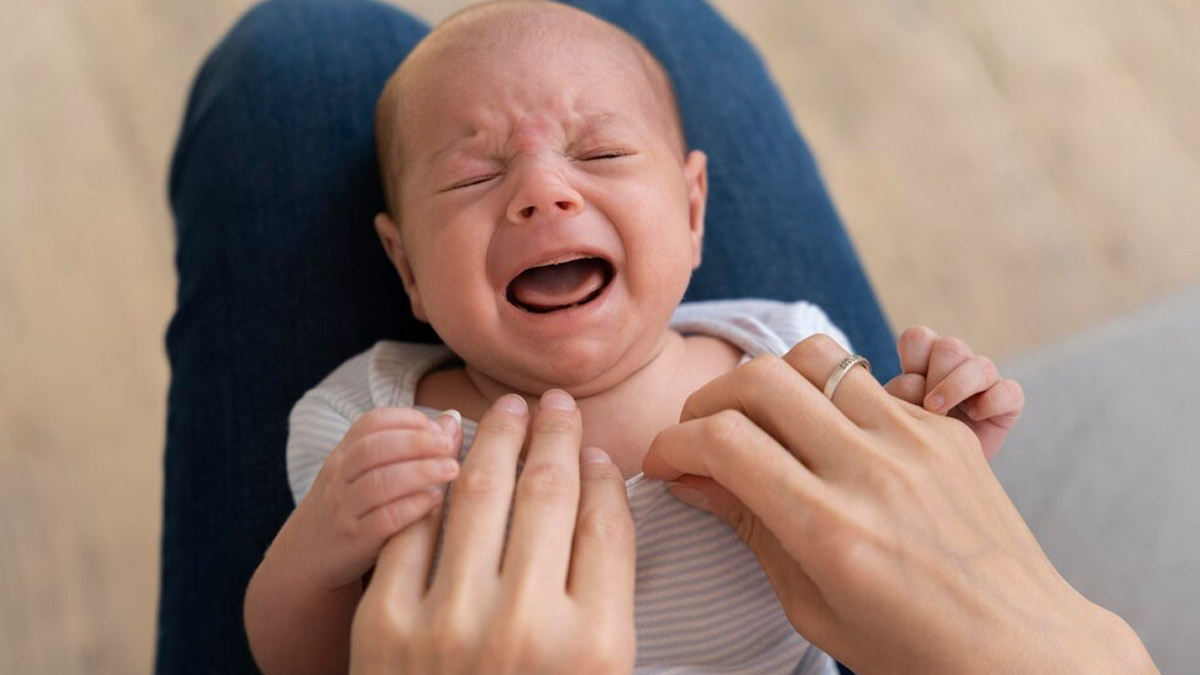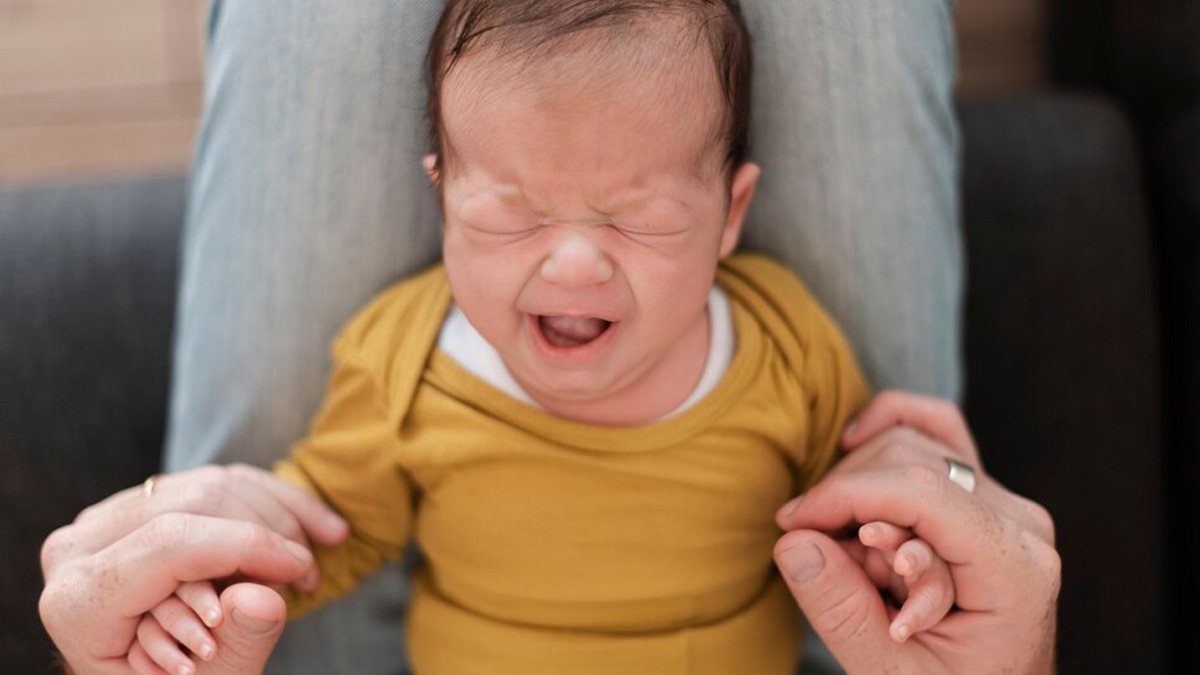
Shaken Baby Syndrome (SBS), also known as Abusive Head Trauma (AHT), is a severe form of child abuse that occurs when an infant or young child is violently shaken. This shaking can cause significant brain injury, leading to devastating consequences, including permanent disability or death.
Table of Content:-
According to the New York State Department of Health, approximately 1,000-3,000 children in the United States suffer from AHT each year. One in four victims of AFT die and 80% of the survivors suffer permanent brain damage.
Raising awareness about SBS/AHT is crucial for ensuring the safety and well-being of infants. To shed light on the same, the Onlymyhealth team spoke to Dr Shiv N Gupta, SR in Pediatrics at ESIC and PGIMSR, New Delhi.
Causes Of Shaken Baby Syndrome
“Shaken Baby Syndrome typically results from a caregiver's frustration or anger, often due to the infant's persistent crying. The caregiver's lack of control or understanding of the infant's needs can lead to violent shaking,” said Dr Gupta.
He elucidated that infants are particularly vulnerable to this type of injury because their neck muscles are not fully developed, and their brains are more susceptible to trauma. Key factors contributing to SBS include:
- Caregiver Stress: High levels of stress, often exacerbated by lack of support or resources, can lead to impulsive and harmful reactions.
- Lack of Awareness: Some caregivers may not be aware of the severe consequences of shaking an infant.
- Frustration with Crying: Persistent crying is a common trigger, as it can be overwhelming for caregivers.

Symptoms of Abusive Head Trauma
The symptoms of shaken baby syndrome can vary widely, depending on the severity of the trauma. Dr Gupta listed some common signs of abusive head trauma:
- Physical Symptoms: These may include difficulty breathing, vomiting, lethargy, poor feeding, seizures, and inability to lift the head. In severe cases, there may be visible bruising, bleeding in the eyes, or other signs of physical trauma.
- Behavioural Changes: Infants may display irritability, excessive crying, or a noticeable decrease in alertness.
- Neurological Symptoms: These can include unresponsiveness, loss of consciousness, or coma in extreme cases.
Diagnosis of Shaken Baby Syndrome
Diagnosing SBS/AHT requires a thorough medical evaluation, as the symptoms can often resemble those of other conditions. The diagnostic process may include:
- Medical History: A detailed history of the child's health, development, and any recent injuries or illnesses is essential.
- Physical Examination: A comprehensive physical examination to check for signs of trauma, such as bruising, swelling, or fractures.
- Imaging Tests: CT scans or MRIs are crucial for detecting brain injuries, bleeding, or swelling.
- Ophthalmologic Examination: An eye examination can reveal retinal haemorrhages, which are a common indicator of SBS.
- Laboratory Tests: Blood tests may be conducted to rule out other medical conditions that could mimic the symptoms of SBS.
Also Read: Recovering From Head Trauma? Expert Discusses Long-Term Effects And Risk Of Brain Injury To Relapse

Treatment of Shaken Baby Syndrome
The treatment of Shaken Baby Syndrome focuses on addressing the immediate medical needs of the infant and providing long-term care and rehabilitation. Dr Gupta listed some key components of abusive head trauma treatment:
- Emergency Care: Immediate medical attention is critical for infants with severe symptoms. This may involve stabilising the infant's breathing, managing seizures, and treating any fractures or internal injuries.
- Surgery: In cases where there is significant brain swelling or bleeding, surgical intervention may be necessary.
- Rehabilitation: Long-term rehabilitation services, including physical therapy, occupational therapy, and speech therapy, are often required to address the developmental and neurological deficits resulting from the injury.
- Support Services: Families may need access to counselling, social services, and support groups to cope with the emotional and psychological impact of SBS.
Preventing Abusive Head Trauma In Babies
“Preventing Shaken Baby Syndrome requires a multi-faceted approach that includes education, support, and intervention,” said Dr Gupta. Key strategies include:
- Parental Education: Educating caregivers about the dangers of shaking an infant and providing strategies for coping with stress and frustration.
- Support Services: Offering resources such as parenting classes, support groups, and respite care to help caregivers manage stress.
- Public Awareness Campaigns: Raising awareness through community programmes, healthcare providers, and media campaigns to inform the public about SBS and its prevention.
- Intervention Programmes: Implementing programmes that identify and support at-risk families to prevent instances of child abuse.
Also Read: World Head Injury Awareness Day: Expert Shares Why Mild Head Injuries Should Be Taken Seriously
Shaken Baby Syndrome or Abusive Head Trauma is a preventable tragedy that can have lifelong consequences for affected infants and their families. By understanding the causes, recognising the symptoms, and promoting effective prevention and treatment strategies, we can work together to protect vulnerable infants and ensure their healthy development. If you suspect a child is at risk of abuse or has been injured, it is crucial to seek immediate medical attention and contact the appropriate authorities to ensure the child's safety.
Also watch this video
How we keep this article up to date:
We work with experts and keep a close eye on the latest in health and wellness. Whenever there is a new research or helpful information, we update our articles with accurate and useful advice.
Current Version